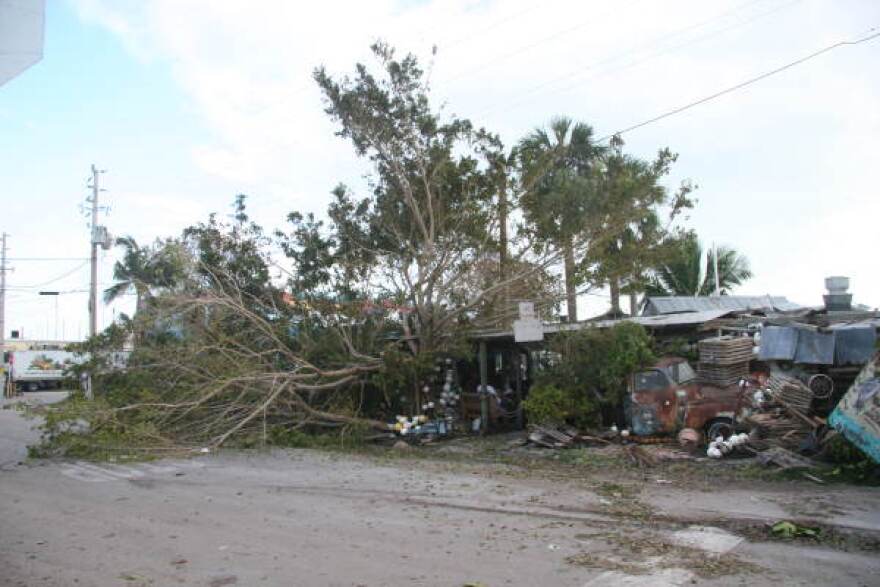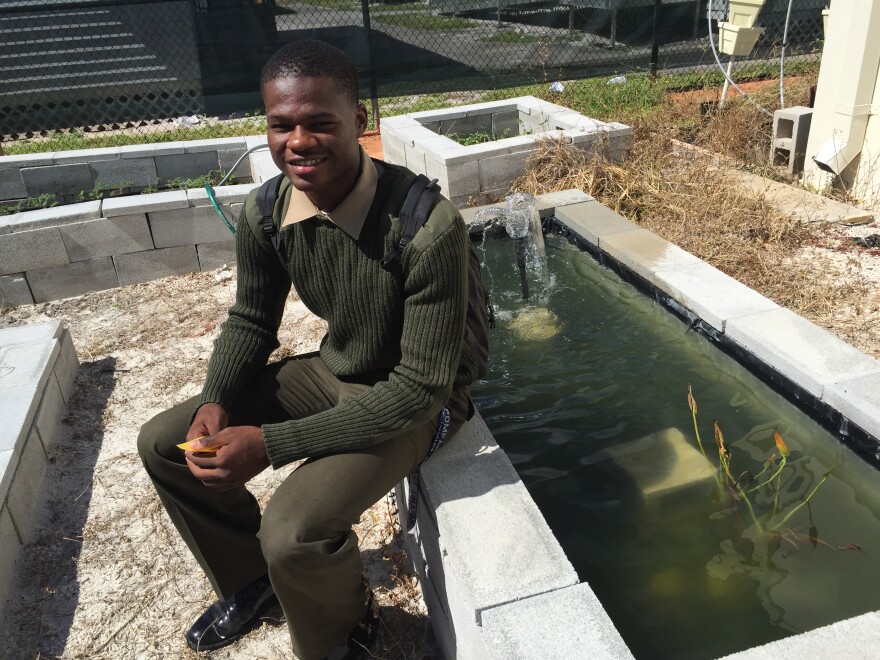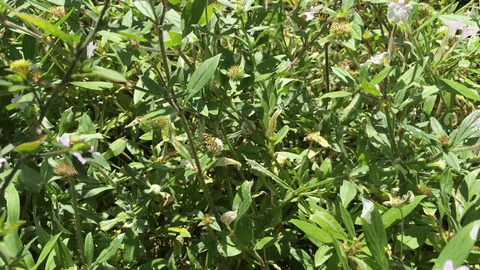There’s a plot of land behind the swimming pool at Deerfield Beach High where science teacher Kelly Caputo points to a cluster of trees out in a field.
“You can see five large Australian pines,” says Caputo. “And as beautiful as they are, they’re non-native — they take up a lot of space, water — and if we do get heavy winds, they’re probably going to create a lot of damage.”
Australian Pines are an invasive species in Florida. They grow up to 90 feet tall. They grow fast. They topple easily. And before Hurricane Wilma tore through South Florida, there were a lot more of them here.
There were a lot more across Broward than elsewhere — along with invasive carrotwoods and massive, top-heavy ficus trees.
“We had downed trees, downed fences. It looked like what I would think a war zone might look like,” says Caputo.
The 2005 storm season left a wake of snapped and uprooted trees. One University of Florida study estimated more than a fifth of urban trees were taken out by storms 10 years ago. Previous studies had shown non-native trees were especially vulnerable to high winds.
But a decade later, those felled trees are an opportunity for new growth.
NEW GROWTH
These days, the big news in landscaping at Deerfield Beach High is a student-run butterfly garden.
“What it is, it’s all native plants, they worked for about two months,” says Caputo. “They cleared it and then they trimmed it.”
If you just stop and let your eye linger on the milkweed and firecracker bushes, you can start to see the movement of bees and dragonflies and tiny, yellow-winged butterflies.
This garden — and a lot of other environmental projects across the school district — are part of an environmental stewardship initiative in Broward County schools. It was born directly out of the winds of Wilma, with an overturned ficus tree that got in the way of then-school board member Robert Parks.
“I was on my way to pick up some water and the roads were blocked,” says Parks.
More than a decade earlier, he had been alarmed by the trees blown down during Andrew. But in that moment in his car, trying to get water after Wilma, Parks decided something had to be done about all the invasive trees that fell down on his schools.
He got a group together and worked out a policy to teach environmental stewardship in Broward schools. The committee also came up with a plan to replant with native species — plants that were less likely to be tossed around like toothpicks in a hurricane.

“You learn to respect the power of a hurricane,” says Parks.
WHAT TO DO NOW
“At the time I lived in a pine forest and pine trees start literally snapping in the middle at about a cat 2.5,” says Pamela Crawford, a landscape architect and gardening-book author who rode out Wilma in her home.
She had evacuated for the other big storms that season, but she didn’t realize how devastating Wilma would be until the night before, when she saw Anderson Cooper reporting from the west coast of Florida.
“I realized that Anderson Cooper never went to storms that fizzled out,” says Crawford. “And I said, ‘Oh no what have I done?’”
That night, she listened with interest to the pop and crack of snapping pine trees until one of them landed on her porch.
The year before Wilma, not long after Hurricane Charley, Crawford found herself at a home show, lecturing on gardens to an audience that seemed shell-shocked.
“And showing all these beautiful pictures, I’m looking around the audience and it was as if they had been in a war — I didn’t see a smile, anything,” she recalls.
So Crawford asked if they instead wanted to talk about what to do now, with their upturned yards.
She had their attention.
Crawford went on to write "Stormscaping: Landscaping to Minimize Wind Damage in Florida." Based on surveys she sent out to park managers, biologists, agriculture experts and botanical gardens, Crawford came up with a list of which trees fare the best and which trees are most likely to fall over on a house in hurricane winds.
“This book gave me a chance to save lives. That, I thought, could be the most important thing of my career,” says Crawford.
“The taller a tree is, the more likely it could potentially get storm-damaged,” says Adrian Hunsberger, the urban horticulture agent for the University of Florida/Miami-Dade County Extension. She’s one of the experts who contributed to Crawford’s book. And she points out that just because a tree isn’t native doesn’t mean it’s necessarily an imminent threat — and just because a tree is native doesn’t guarantee it will stay up in a hurricane.
“Trees are a permanent part of your landscape — they’re kind of like the walls of your house; if you don’t make good judgments and anticipate how big the tree is going to get, you can make a lot of mistakes,” says Hunsberger.
Hunsberger and Crawford both urge homeowners to check out the health of their trees. The county extension office runs a plant hotline that can help gardeners identify what’s in their yards and how to deal with it.

STEWARDSHIP
Back at Deerfield Beach High, 17-year-old Jefftey Joseph shows off his school’s raised garden beds and fishpond. The space is basically an outdoor classroom for science classes.
“We take care of these plants and animals — it’s better to observe and see what’s going on rather than to just listen,” says Joseph.
He took his school’s environmental stewardship message to heart.
“Personally, it’s a way for me to better myself,” he says. “Because if I’m not taking care of something, you know, I feel as if there’s no point in me being here.”
He says maybe he would have felt that way eventually, but those lessons — the ones that came out of that fallen ficus of hurricane Wilma — they changed the way he sees his world.



